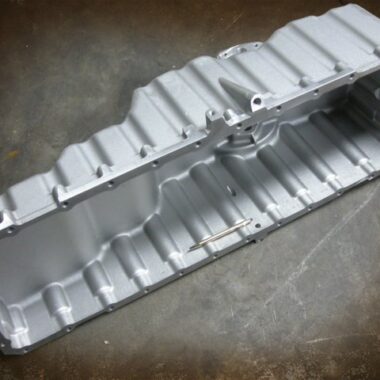Mastering Aluminum Casting: Proven Methods to Boost Manufacturing Performance
Mastering Aluminum Casting: Proven Methods to Boost Manufacturing Performance
Blog Article
Study the World of Aluminum Spreading: Understanding the Different Approaches
Light weight aluminum casting is an essential process in the manufacturing industry, with numerous techniques employed to develop elaborate and specific components. Recognizing the different techniques utilized in aluminum spreading can supply important insights into the capacities and restrictions of each strategy. From the standard sand casting method to the innovative die casting procedure, each technique offers one-of-a-kind benefits depending upon the needs of the job. Discovering these diverse approaches can use an extensive sight of the possibilities within the globe of aluminum spreading and exactly how each strategy contributes to forming the modern production landscape.
Sand Casting Method
Sand casting, a widely-used approach in aluminum casting procedures, involves developing mold and mildews made of compacted sand for pouring molten metal. Once the mold is prepared, it is securely positioned in a flask and molten aluminum is put right into the cavity.
After the metal has actually cooled down and strengthened, the sand mold is broken away to reveal the light weight aluminum spreading. Sand casting enables the manufacturing of intricate forms and big parts that might be tough or costly to generate utilizing other methods. It is additionally a sustainable technique as the sand can be recycled and utilized several times, minimizing waste in the spreading procedure.
Irreversible Mold And Mildew Method

One considerable benefit of the Long-term Mold Method is the boosted dimensional precision it provides. The metal mold allows for tighter resistances and finer details in the final light weight aluminum castings contrasted to sand casting methods. This precision makes it a preferred choice for applications where limited dimensional control is vital, such as in the auto and aerospace industries.

Die Casting Process

Financial Investment Casting Technique
Utilizing a precision spreading technique, Investment Casting Strategy entails producing detailed aluminum components by putting molten metal right into a ceramic mold and mildew. This process, likewise understood as lost-wax casting, begins with the creation of a wax pattern of the wanted component (aluminum casting).
Financial investment casting is frequently made use of for producing elements in sectors where elaborate styles and tight tolerances are required, such as aerospace, automotive, and clinical tools. The flexibility and accuracy of the Financial investment Casting Strategy make it a useful strategy in the globe of light weight aluminum casting.
Lost Foam Spreading Technique
Having explored the detailed accuracy of Financial investment Casting Strategy, the focus currently changes to the ingenious method of Lost Foam Spreading in light weight aluminum part production. Lost Foam Casting, likewise known as evaporative pattern spreading, is a modern-day technique where a foam pattern of the wanted part is developed and then coated with a refractory material.
Among the major benefits of Lost Foam Spreading is its capability to produce complicated shapes with elaborate details, often in a single item without the requirement for extra look at this now machining. This technique is additionally understood for its high dimensional precision and smooth surface area finish. Additionally, Lost Foam Casting is a cost-efficient process as it minimizes the need for cores and allows for the manufacturing of light-weight parts. Regardless of its advantages, Lost Foam Casting calls for cautious control of the spreading procedure to prevent flaws and make certain high quality components.
Final Thought
To conclude, aluminum spreading provides a selection of techniques such as sand casting, irreversible mold strategy, pass away spreading, investment spreading, and lost foam spreading. Each technique has its very own benefits and applications, making aluminum casting a flexible and commonly used process in various markets. Comprehending the distinctions in between these methods is critical in choosing one of the most ideal spreading strategy for certain production requirements.
Sand spreading, a widely-used technique in aluminum spreading procedures, entails producing molds made of compacted sand for pouring liquified metal. aluminum casting.The Long-term Full Report Mold And Mildew her latest blog Technique, like sand casting, is one more prevalent method employed in light weight aluminum casting procedures, supplying unique advantages in terms of mold and mildew reusability and dimensional accuracy. The metal mold and mildew permits for tighter tolerances and better information in the last aluminum spreadings contrasted to sand spreading methods. The two main kinds of die spreading are chilly chamber die casting and hot chamber pass away spreading, each suitable for various types of light weight aluminum alloys.In verdict, aluminum casting uses a variety of techniques such as sand spreading, long-term mold and mildew technique, die casting, investment casting, and lost foam casting
Report this page